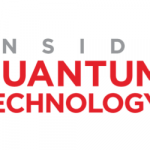Quantum News Briefs November 28: D-Wave looks at past, present & future of quantum computing in VentureBeat interview, A guide to joining the quantum workforce of tomorrow; Russian scientists create quantum neural network to recognize images + MORE
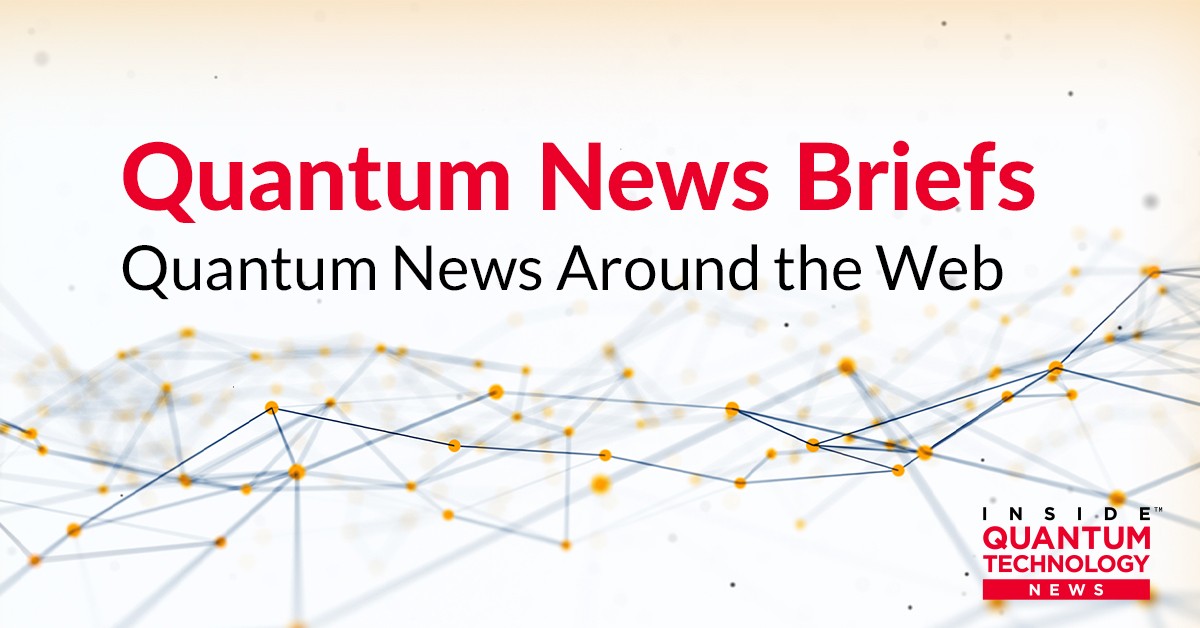
Quantum News Briefs November 28: Quantum News Briefs November 28: D-Wave looks at past, present & future of quantum computing in VentureBeat interview, A guide to joining the quantum workforce of tomorrow; Russian scientists create quantum neural network to recognize images + MORE
*****
D-Wave looks at past, present & future of quantum computing in VentureBeat interview
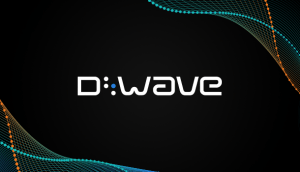
Venture Beat’s George Anadiotis recently interviewed D-Wave’s CEO Alan Baratz. Quantum News Briefs summarizes the November 25 interview below.
Baratz spoke to VentureBeat about quantum computing fundamentals and how this is related to the market’s current state, real-world clients and use cases, and what the future holds for this space. What he considers closer to the work he is doing today with D-Wave, however, is being the first president of Javasoft at Sun Microsystems. At Javasoft, Baratz was responsible for bringing the Java technology to market, building the developer ecosystem and growing revenue. As he noted, a lot of what he did there is similar to what D-Wave is doing now: creating a new industry and building a new ecosystem.
Back when D-Wave set out to build its quantum computer, the science and the engineering had not yet progressed to the point where it was believed that you could build a gate model system, Baratz explained. So D-Wave decided to go ahead and build an annealing system because that was something they believed they could do.
“Everybody else concluded that they might as well build a gate model system because they believed they [eventually] could and it could solve all problems, whereas annealing, it was known, could only solve a subset of the problems. Everybody else jumped into gate. What happened was: a year ago, everybody got surprised, us included, because that’s the point in time at which it was proven that gate model systems can’t really deliver a speed-up on optimization problems”, Baratz noted.
A year ago, D-Wave concluded that their annealing quantum computers had achieved commercial status. That means that they were capable of solving real business problems at commercial scale…” as per Baratz. As the company had some bandwidth, they decided to initiate a gate model program that would allow them to eventually be able to address the full market for quantum.
Based on Baratz’s description, the philosophy of using gate model-based quantum systems sounds closer to programming classical computers. Using annealing-based quantum systems, however, is very different.
Baratz’s position today seems to be drawing a line between quantum computing applications today and in the future. “While everybody else in the quantum industry talks about government research grants as revenue and national labs and academic institutions as customers, we talk about companies like Mastercard, PayPal, GlaxoSmithKline, Johnson and Johnson, Volkswagen, BASF, Deloitte, SavantX and the port of L.A..”
Overall, Baratz concluded, the quantum ecosystem is defined by the annealing vs. gate models divide. Annealing is commercial today, while with gate models, things are still at a research and experimentation stage. “We’re the only company in the world that does annealing to address optimization. Now we’re doing gate as well. So, we’ll be the only company in the world that can address the full market for quantum,” Baratz said. Click here to read the extensive Venture Beat interview in-entirety.
*****
A guide to joining the quantum workforce of tomorrow
 Tristan Greene of TNW’s Neural writes this week about career opportunities in quantum computing with specific attention to the European sector. Quantum News Briefs summarizes below.
Tristan Greene of TNW’s Neural writes this week about career opportunities in quantum computing with specific attention to the European sector. Quantum News Briefs summarizes below.
There’s never been a better time than right now for potential jobseekers to get in on what, arguably, could be the greatest technological revolution since the advent of the internet. But what if you don’t have a PhD in physics or a background in quantum research?
Green encourages non-physicists: The world of quantum technologies will require a lot more than just project managers and theoretical physicists over the next few decades and beyond and advises, “There are, essentially, four ways to get involved in the quantum computing revolution from the inside:”
1. Get a PhD/Master’s in theoretical physics or relevant engineering program with a specific focus on quantum technologies
2. Get a STEM degree in nearly any adjacent field, ensuring you also take a few courses related to quantum physics.
3. Apply or acquire related STEM skills and qualifications.
4. Invest in quantum technologies companies and startups
The first one, the PhD/Masters might take the longest, but it’s also the surest path. It’s difficult to find specific numbers for the EU, but in the US experts expect the overall employment of physicists to grow a whopping 8% between 2021 and 2031 — a faster rate than all other occupations.
But, you don’t actually have to be a physicist.Those considering pursuing a college degree in nearly any STEM field can increase their chances of working in the quantum sector without straying too far from their core disciplines. Some areas of study to consider:
–Lasers/photonics
–Cryogenics
–Applied mathematics
–Computer science
–Artificial intelligence / machine learning
–Advanced engineering degrees
The third option is a bit more nebulous. Those already working in STEM, or autodidacts with a penchant for learning complex paradigms could, theoretically at least, learn how to program quantum systems through one of the many available open-source projects. It’s possible you could get the right certifications without spending much beyond the cost of your internet access, but you might find yourself in competition with university graduates for positions.
Finally, you could always get onboard the quantum train by investing. It’s beyond the scope of this article (or its author) to give financial advice. You could also get involved in the quantum VC scene and fund any of the dozens of startups in Europe as well.
Click here to read the original TNW “Neural” article in-entirety.
*****
Russian scientists create quantum neural network to recognize images
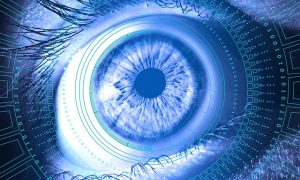 Russian physicists developed the world’s first algorithm that makes use of hybrid quantum neural network architecture to recognize images with a very high level of precision according to a November 25 announcement. Quantum News Briefs summarizes the announcement.
Russian physicists developed the world’s first algorithm that makes use of hybrid quantum neural network architecture to recognize images with a very high level of precision according to a November 25 announcement. Quantum News Briefs summarizes the announcement.
Alexei Fedorov, head of the scientific group of the Quantum Center in Moscow, said for the first time it was possible to implement the proposed approach to solve the problem of classifying four classes of images using eight quantum bits to encode data and four auxiliary quantum bits.
The group of researchers led by Fedorov, who is also a professor at the Moscow Institute of Physics and Technology, developed a hybrid approach for the first time in the world, allowing the use of quantum computers to speed up the work of individual layers of neural networks capable of recognizing different types of images with a high level of precision.
Neural networks are one of the most popular approaches in developing artificial intelligence systems, in which the initial data is processed using several overlapping layers of artificial similarities of neurons with different properties.
Their applications makes it possible to gradually bring out the most important key features of the analyzed images or other forms of information and use them to classify objects. Click here to read original announcement.
*****
Scientists extend qubit lifetimes
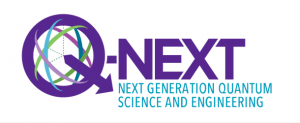 Scientists have shown they can extend the lifetime of a molecular qubit by changing the surrounding crystal’s structure to be less symmetrical. The asymmetry protects the qubit from noise, enabling it to maintain information for five times longer than if it were housed in a symmetrical structure. Quantum News Briefs summarizes the November 26 announcement in ScitechDaily.
Scientists have shown they can extend the lifetime of a molecular qubit by changing the surrounding crystal’s structure to be less symmetrical. The asymmetry protects the qubit from noise, enabling it to maintain information for five times longer than if it were housed in a symmetrical structure. Quantum News Briefs summarizes the November 26 announcement in ScitechDaily.
The team’s qubit is made of a chromium-based ion attached to carbon-based molecules. The study team obtained a coherence time (the time the qubit maintains information) of 10 microseconds, or 10 millionths of a second, compared to a molecular qubit’s coherence time of 2 microseconds in a symmetrical crystal host.
Longer coherence times make for more useful qubits in applications such as computing, long-distance communication, and sensing in areas such as medicine, navigation, and astronomy.
Because the coherence time can be stretched by altering the qubit’s housing or by placing it in a more asymmetrical position relative to its housing, there’s no need to change the qubit itself to achieve longer lifetimes. Just change its situation.
“This is an important development. Being able to precisely tune a qubit’s environment is a unique advantage of molecular qubits. This can’t be easily done within other material systems,” said Q-NEXT Director and paper co-author David Awschalom. “Knowing we can extend a qubit’s lifetime by engineering its environment opens new possibilities for applications across quantum computing, sensing, and communication.”
The findings, which were published in the journal Physical Review X, were produced by a group of scientists from the Massachusetts Institute of Technology, Argonne National Laboratory of the US Department of Energy (DOE), Northwestern University, The University of Chicago, and the University of Glasgow. Q-NEXT, a DOE National Quantum Information Science Research Center run by Argonne, helped fund the research.
Click here to read SciTechDaily article in-entirety.
*****
Sandra K. Helsel, Ph.D. has been researching and reporting on frontier technologies since 1990. She has her Ph.D. from the University of Arizona.




















